Romancing the helpmate with Grandmaster Christopher Jones
The genre of helpmate is much ignored by over-the-board chess players but for the open-minded out there, who really wants to care, it can truly become a perennial source of joy. Helpmates are immensely satisfying to both solve and compose, and perhaps no one can tell this better than Grandmaster Christopher Jones. Now 68 years old, Christopher started off by solving helpmates from the magazines of the British Chess Problem Society and then went on to compose, over a course of more than thirty years, thousands of helpmates of his own. In this article we bring you a revealing interview with Christopher and of course also, a small collection of some exquisite helpmates!
The thrill and art of helpmates
"Chess art is one degree of abstraction higher than the game of chess. In one sense we can say that the helpmate is the purest of all the chess arts, the nearest to art for art’s sake. If there exists somewhere, on an unknown planet, a race of beings who play chess and whose artistic inclination is stronger than their aggressive instincts, then it is probable that they will have invented the helpmate before the direct mate." ~ Jean Oudot
Helpmate, the kind of problem where both sides on a chessboard work together instead of opposing each other in order to achieve a stipulated goal, is usually known to put lay chess players off. "What does it mean? What practical purpose does it serve?", are the habitual complaints they come up with. Well, if every human pursuit was meant to have a clear-cut "utilitarian" motif, so to speak, then probably we wouldn't be playing chess at all in the first place; meaning and purpose of life itself are hard to define but we insist on living anyway, don't we? Likewise, helpmates too can be of great fun (and possibly of great value too) if for once we forgo our narrow conceptions of practicality and open our minds to it. "Helpmates have a fatal fascination", warned Irving Chernev in his celebrated book The Bright Side of Chess, "it is difficult after indulging in a few of them to return to less imaginative forms of chess", wrote he.
We have delved into the helpmate genre in a few of our articles before but today we explore it mainly through the works of one man, Christopher Jones. Christopher is a specialist par excellence of helpmates and a FIDE Grandmaster of Chess Composition. He is in fact only the third Briton, after Comins Mansfield and Norman Macleod, to be conferred with this prestigious title. In this article we not only discuss several of his creations in detail but also pick his unique mind. We try to understand his style as well as his driving motivation behind composing. So dear readers, cut yourself some slack from fretting about tournaments, ratings etc and take a wholehearted plunge into the depths of uninhibited chess beauty!

Christopher Jones | Photo: chessscotland.com
Help play in chess problems, as opposed to conventional adversarial play, represents pure possibility; with the element of contest lifted, in it the two sides really come together and work in consonance to build a fantastic mating pattern. Therefore, the themes and ideas that are difficult or even outright impossible to achieve in a directmate or a study are often beautifully realized through helpmates. We examine one such effect in our very first example today. The ten problems quoted next are all by GM Christopher, by the way. To avoid repetition we don't mention it every time.
Problem 1
The Problemist 2000, 5th Commendation

We have discussed earlier how helpmates often admit multiple solutions exhibiting analogous theme or strategy. This is done to make up for the lack of variations in cooperative play and the multiple solutions, showing thematic unity or harmony, act in the same way as variations do in a directmate problem. The pair of solutions in this case are 1.Kxd5 Nb5 2.Ke5 Rf5# and 1.exd5 Rd6 2.Kxd4 Re4#. Notice that the bPe6 is successively (self) pinned in the two phases and the white rooks nicely exchange their functions of pinning it and delivering the mates. This is a widely investigated effect in helpmates known as the Anticipatory Self-pin or the ASP. The term suggests its own meaning - a black piece (a pawn here) closes a line of a white piece (here a rook) to free a square for the black king. The BK then moves to this square and the pin of the black piece is exploited in the mate. In other words, the self-pin is formed in course of the play rather than being given ready-made in the initial diagram.
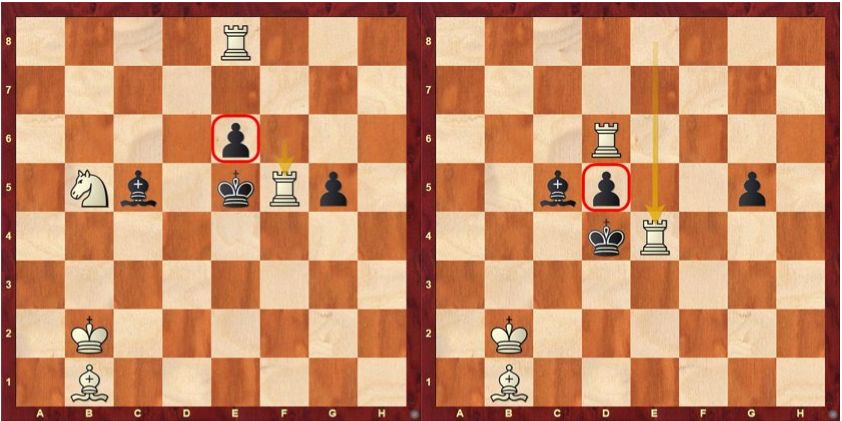
Problem 2
Torre & Cavallo - Scacco! 2003, 2nd Prize
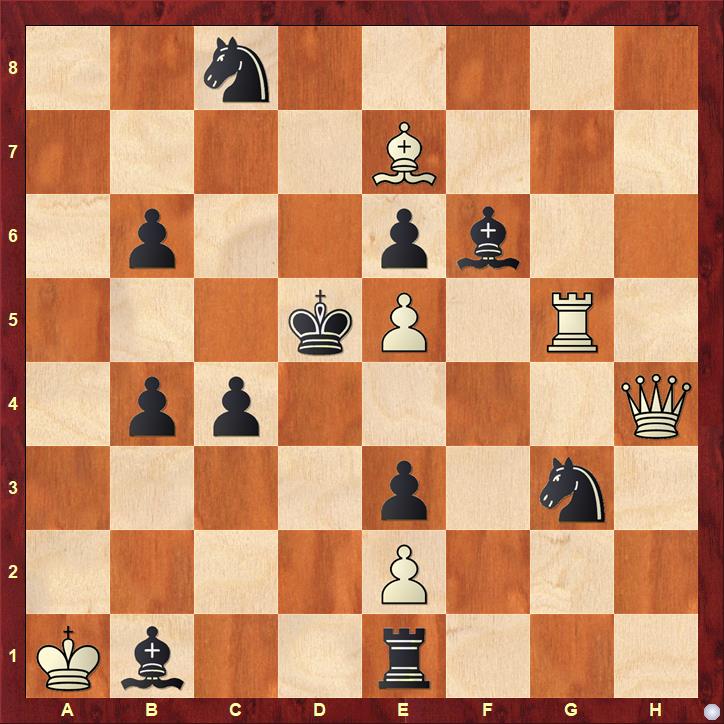
Twinning is another oft-seen device that composers use to add richness to helpmates. Twins are just parts of a given problem made from the original diagram by incorporating specific changes. They require solutions of their own and thus act as substitutes for variations. Our second problem shows the novel striptease twinning where twins are made simply by stripping some pieces off the chessboard. Part (a) of the problem, which uses the diagram above, is solved by 1.Nf5 Bc5 2.Kxe5 Qd4#. For part (b), we remove the bPe6 and the solution now is 1.Ne4 Bxf6 2.Kd4 e6#. Lastly for part (c), we remove the bNg3 as well and in this case the solution becomes 1.Nd6 Qe4+ 2.Kc5 exf6#. A spectacular achievement where we see the common ASP effect realized using three different units!
Problem 3
Next, we move on to problems of length three. The B-R-R-B arrangement we see in the following diagram is termed as the Organ Pipes and leads to the quadrupling of the mutual rook-bishop interference known as Grimshaw. But how does one exploit it?
Csák - Majoros 2004, 1st Prize
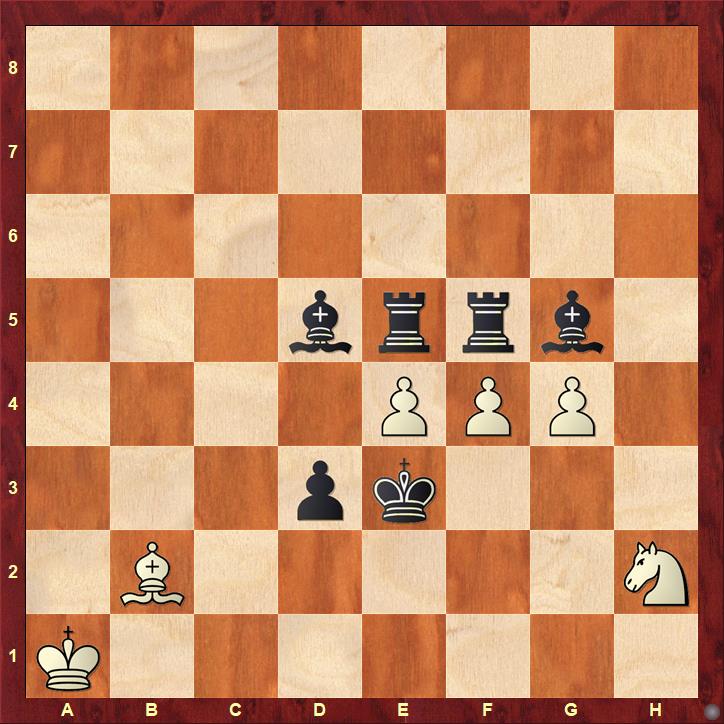
This is yet again a very elegant production where the rook-bishop pairs also act as self-blocking units. 1.Kxe4 fxe5 2.Be3 Nf3 3.Rf4 Ng5# and 1.Kxf4 exf5 2.Re3 Ba3 3.Be4 Bd6#. Note that we have economic model mates in the final positions once again, in addition to the so called Chumakov theme where we see two pieces (rooks) getting captured in one solution but self-blocking in another.
Problem 4
Springaren 2012, 1st Prize

The two solutions in this problem, 1.Kd5 f4 2.Rb6 Rc6 3.Bd4 Bxg2# and 1.Kd6 d4 2.Bb7 Bc6 3.Rc7 Rxf6#, show harmonious exchange of functions between pieces coupled with the picturesque Bristol theme. A linear piece moves and crosses over a critical square X. A similar linear piece moves on this same line and in the same direction to occupy the critical square X.
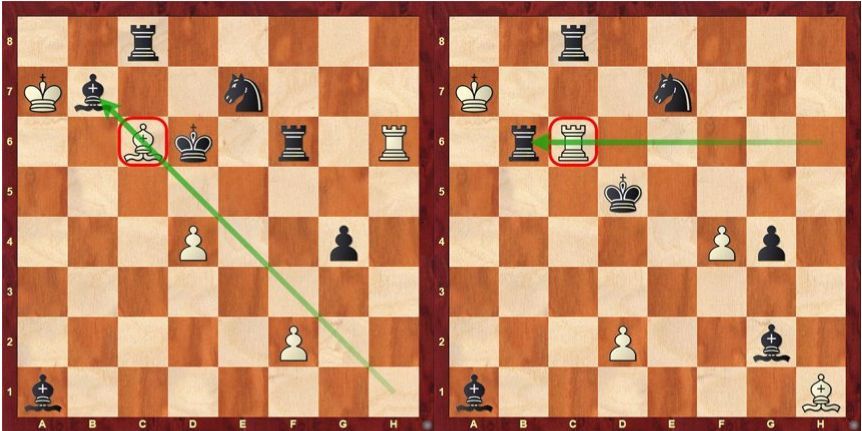
Problem 5
Schach 2011, 1st Prize

Sacrificial play isn't paradoxical in the same way in helpmates as in directmates but is quite pleasurable nonetheless. Problem 5 shows some fantastic effects achieved through annihilation of pieces. 1.Nc4 Bxa2 2.Ke4 Bxc4 White begins by capturing two black units and thus "anticipatorily" clears a vital square for the bRc2 and paves way for a discovery on the fourth rank effecting 3.Ra2 Be6#. In the analogous second solution the same thing happens but the white rook and white bishop nicely swap roles 1.Rc4 Rxa4 2.Ke6 Rxc4 3.Na4 Rxf4#. A spotless masterpiece, isn't it? Hold on, it only gets better!
Problem 6
Problem Online 2005, 1st Prize

Eric Huber in his popular Chess Composers Blog quotes problem 6 above. The solution for the diagram position shows a striking switchback of the bRf3: 1.Rc3 Be4 2.Rc2 Rb3 3.Rc3 Rb4#. For part (b) this bRf3 is replaced by a black bishop, and the solution becomes 1.Bd5 Rd3 2.Be6 Bb7 3.Bd5 Ba6# with the switchback now being carried out by the newly added bBf3!

Note also how the strategic effects in the two phases take place on orthogonal-diagonal lines. This theme framework is termed as the Orthogonal Diagonal Transformation (ODT) and features in many of Christopher's problems. It is not without reason that Eric mentions in his website that these are the type of problems that have established him among the top helpmate composers in the world!
Problem 7
Orbit 2005, 1st Prize

We now move onto quoting Christopher's longer problems. Problem 7 above is a helpmate in 5 and has only one solution: 1.Qb2 Bxe5 2.c3 Bxc3 3.Kd6 Ba5 4.Qf6 c4 5.Ke5 Bc7#. Note the attractive maneuvers and intensity of play that compensates for the lack of multiple phases! The 1.bQb2 followed by 2...Bxc3 effect is a Bristol in disguise. And of course, one can't possibly miss the excellent round-trip (rundlauf theme) of the bishop!
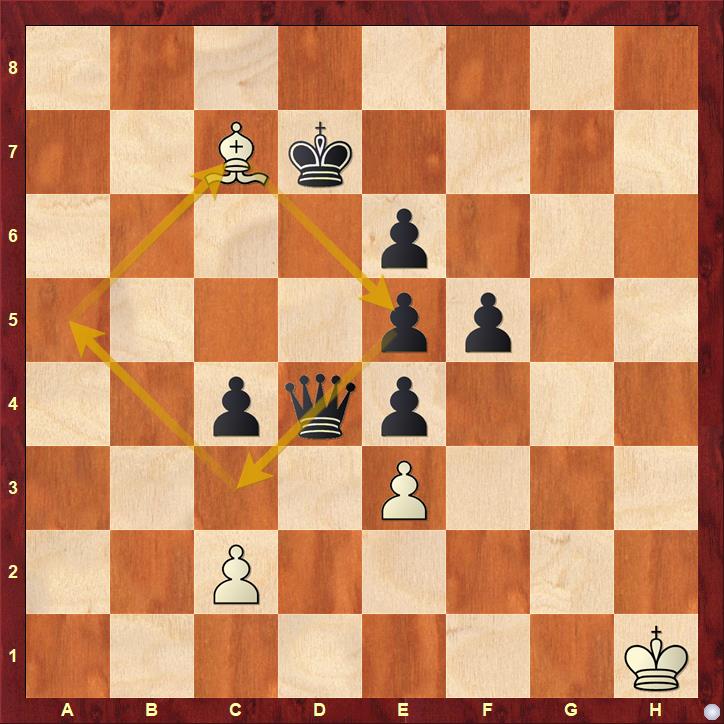
Do you notice something else odd about the final mating picture? Isn't it difficult to imagine the black king getting mated on e5? The e5 square is not only attacked in the given diagram but the attacking piece, the bishop, also makes a capture there, yet paradoxically the bK eventually moves into and gets mated on this same square. Problemists call this unlikely effect, the Kniest theme!
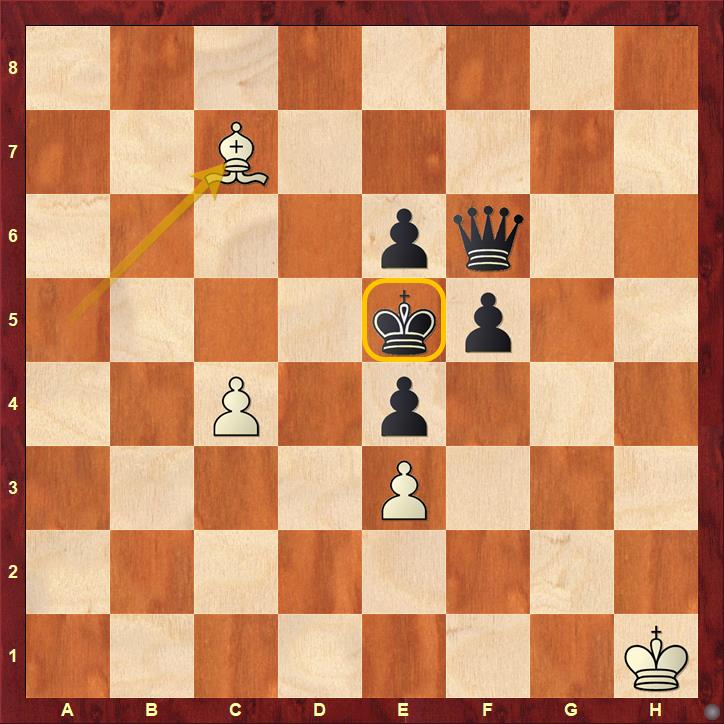
Problem 8
The Problemist 2001, 2nd Prize
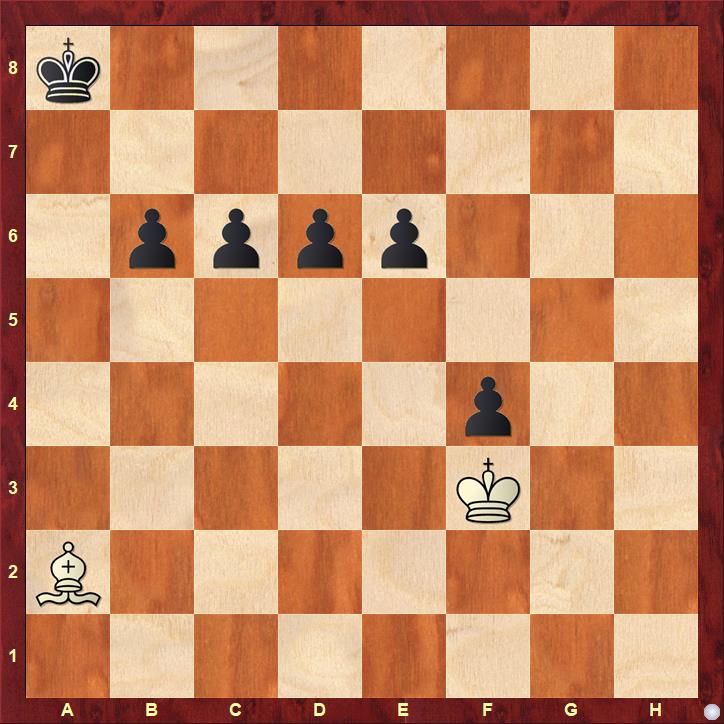
Before it gets too lengthy, we end our discussion of Christopher's stratagems with the light-weight helpmate in 7 above. The slender force is certainly a marked feature of this problem. You wouldn't expect much happening here but as they say, surprise is the key in all art! This fine jewel is actually replete with a bunch of themes. The solutions 1.e5 Bd5 2.e4+ Kxf4 3.e3 Kf5 4.e2 Ke6 5.e1=B Kxd6 6.Bg3+ Kxc6 7.Bb8 Kxb6# and 1.c5 Bxe6 2.c4 Ke4 3.c3 Kd5 4.c2 Kc6 5.c1=B Kxb6 6.Be3+ Kc7 7.Ba7 Bd5# each feature nice bishop-underpromotions and ends in echo-mates mirrored diagonally. Moreover, there's also the Chumakov theme. In the first phase the bPe6 promotes and acts as a self-blocker while the bPc6 is captured. This is reversed in the second phase where the bPc6 promotes and acts as a self-blocking unit while bPe6 is captured. It is beyond surprising that something so interesting could be hidden in a setting as simple as this!
Now that you have got a taste of Christopher's capabilities, you might be intrigued to know how his mind works. Why does he loves creating helpmates in the first place? What does he value most in a problem? Well, read on to know all these and much more. Satanick Mukhuty of ChessBase India conducted an exclusive interview with the artist himself.
In conversation with Grandmaster Christopher Jones
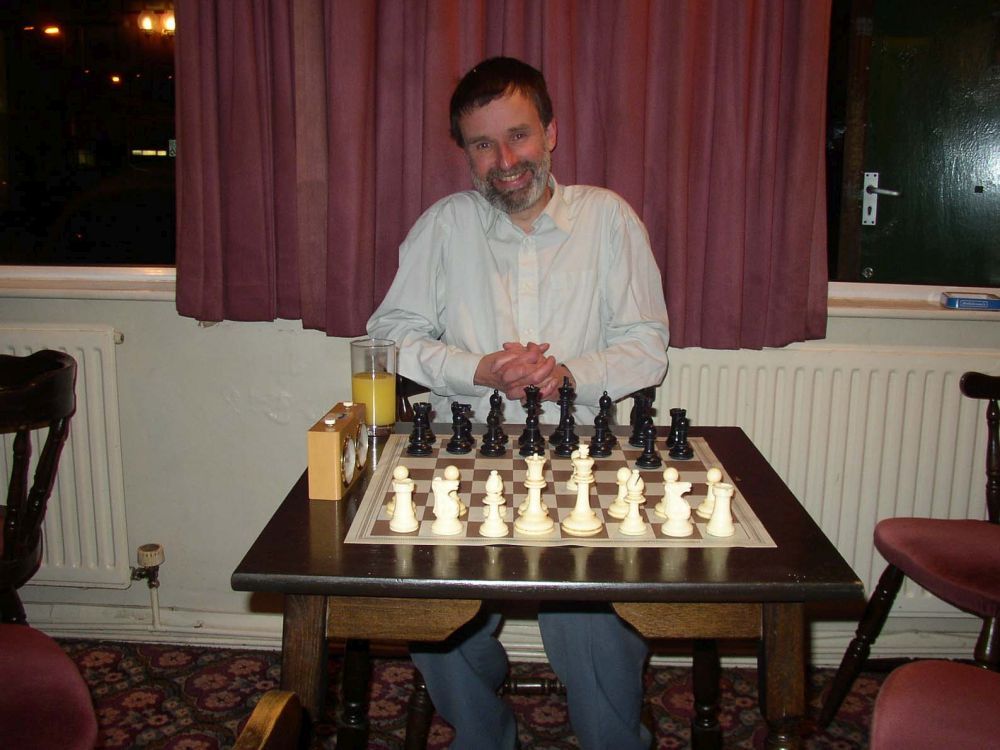
Satanick Mukhuty (SM): I would like to start from the very beginning. When did you learn chess and how did you come in contact with chess compositions?
Christopher Jones (CJ): My father taught me the game when I was, I think, seven or eight. I was lucky that we had a good chess club at school and my involvement in the game grew from there. At University in Oxford I was introduced to endgame studies by John Nunn. Then eventually in my thirties I began to take an interest in the problem section in British Chess Magazine. I joined the British Chess Problem Society in 1987 and a few years later started going to their annual weekend meetings, where I met other problemists for the first time.
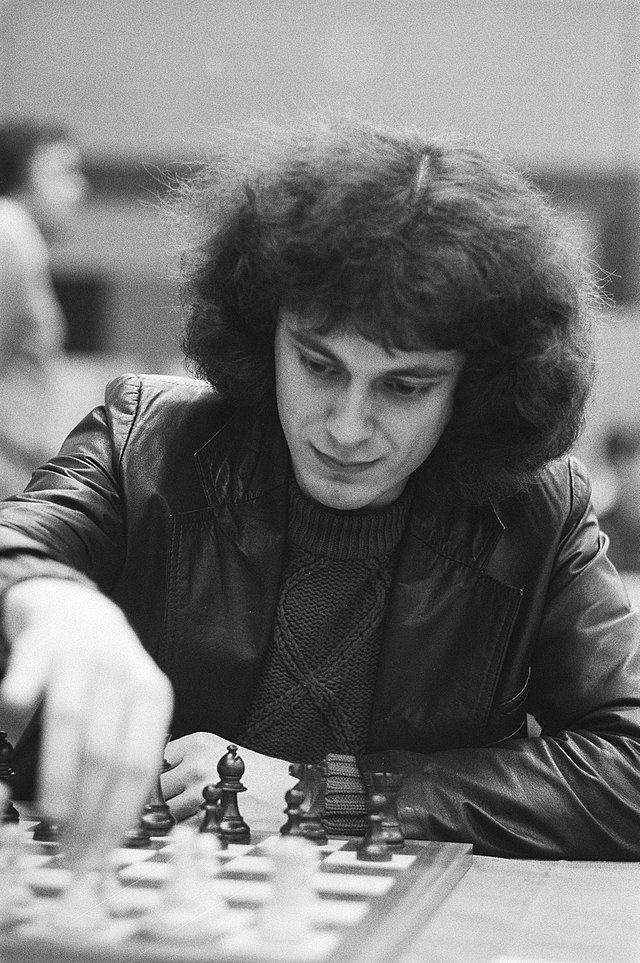
SM: You clearly also became a strong player and succeeded in several over the board tournaments. You could have continued your chess playing career, what in particular attracted you to chess problems and especially to helpmates?
CJ: I wasn’t all that strong a player. I grew up in Scotland, and in 1969 and 1970, when junior chess in Scotland was not very strong, I made it on to bottom board in the Scottish junior team. It’s been downhill all the way from there! Well, not entirely – as a club player (and only very occasional congress player) since then I have in my better seasons been slightly better than in my junior days, but even then not much over the 2000 mark. In 2018 I decided that the general air of disgruntlement that had descended upon my chess was such that I would retire. The other side of that coin is my unalloyed joy in chess problems, where you don’t have to fret about what an opponent is doing or berate yourself for making silly moves but can instead respond positively to any setbacks in trying to achieve a sound, computer-approved setting for an attractive idea. Helpmates were always the problems that appealed most to me, and which in my early days I was keenest to solve – the puzzle element is a big factor, and as a composer if you get a nice idea you may be able to set up the bare bones of the problem more quickly than would be possible in other problem genres (albeit you may then have to take a very long time to eliminate cooks!).
SM: What features do you value the most in a chess problem and what according to you constitutes true chess beauty?
CJ: Like nearly all chess problem buffs I enjoy seeing strategic themes (such as pieces being pinned and unpinned, pieces being overloaded, nice things happening when the lines of guard from various pieces intersect, etc.) and I appreciate and value complete accuracy in the play. In helpmates, where usually it is specified that there are a number of solutions, there is also beauty in the relationship between solutions (things happening on diagonal lines in one solution happening orthogonally in the other and vice versa, for example). While there is elegance in presenting the play in an easy to see way, my personal preference is for well-concealed solutions, with mate positions difficult to envisage from the initial diagram. Some problemists tend to disparage difficulty, but I’ve always felt that if it is initially hard to see how order can be imposed upon an opaque configuration of pieces then the aesthetic pleasure in any beauty that can eventually be discovered is enhanced.
SM: How do you see the art of chess composition in relation to other arts like music or literature? Many well-known composers have been known to have a predilection for arts in general. For instance, Christopher Feather, who is another great specialist of helpmates like yourself, excels in the languages and enjoys listening to music. Do you have similar interests?

CJ: I do think that chess composition invites comparison with other forms of art. It doesn’t have the same capacity to stir the emotions and to affect the spirit as music and literature but the appreciation of a good chess problem or study invites participation in a process of achieving order out of chaos which can be deeply satisfying. (More intensely when you actually solve the problem, which is one reason for it being regrettable that I’ve become lazy, rarely solve problems and as a result am now a weak solver! But there is still satisfaction to be had even by non-solvers.) With regards to a predilection for the arts in general, I can only claim untapped potential musically (I enjoy casual listening, especially to jazz, and in my amateurish way sing in my church choir), I enjoy reading novels, and (in common with many other problem composers of my acquaintance) I enjoy cryptic crosswords.
SM: Tell us about some of the composers you admire personally and who have inspired you stylistically.
CJ: I’ve always admired a wide range of composers but have not consciously modelled myself on any. I remember first being drawn to helpmates by spending ages finding the intricate second solution to a H#5 (helpmate in 5) by Tivadar Kardos. I did then enjoy an anthology of H#3s by Toma Garai (who argued that 3 moves was the optimal length for helpmates) and then the work of Chris Feather, in particular his book Black to Play, full of fine problems and encouraging readers to think about what it is worthwhile to try to do in composing helpmates. You always hope to produce something paradoxical and rather surprising, even if this becomes increasingly a challenge as more and more things have been done in the genre. However it is still entirely possible artfully to disguise and thus surprisingly re-package familiar ideas! There are still many brilliant helpmate composers around, very arguably taking the genre to new heights with their ability to produce sound (often long) multi-solution helpmates dense with strategy. It’s invidious to name only a few of them, but among the host of fine modern composers one can confidently seek out the works of Vasyl Krizhanovsky, Vitaly Medintsev, Valery Gurov and the twins Aleksandr and Valery Semenenko.
Note: Christopher was kind enough to send us three of his favourite modern helpmates with detailed commentary. This is presented after this interview!
SM: You have also been a notable editor of "The Problemist" magazine and served as the president and honourable secretary of the British Chess Problem Society. Do you still hold an administrative position in the BCPS? How has been the experience serving in these positions?
CJ: Yes, I still edit the helpmates section of The Problemist, and I’m still the Hon. Secretary of the BCPS. I’ve particularly enjoyed the former role, as it keeps me in touch with composers from around the world and gives me a preview of many outstanding problems sent in for publication. The other role involves me in preparing agendas and minutes of meetings, and some other administrative tasks, for instance in connection with arrangements for the annual BCPS residential weekend conferences.
SM: How do you perceive has the popularity of problem chess changed over the years both in Great Britain and around the world?
CJ: A century ago many British newspapers published chess problems. These days, with rare exceptions, the only chess in our newspapers is games and ‘how did White win?’ positions from games. So we tend to be rather pessimistic, though there are modestly encouraging signs of interest amongst newcomers in solving competitions. And sometimes people who become interested in solving go on to enjoy the artistic side of problems. Apart from anything else, it helps in solving if you have an idea of the artistic idea that the composer may be trying to show! In some other countries - including India I think! – the picture is brighter. And one good thing about becoming interested in chess problems nowadays is that there has been a vast expansion in the field of fairy chess problems, where you can experiment with all sorts of new ideas without being tied to the orthodox chess pieces being moved according to the orthodox chess rules.
SM: As an experienced leader of a very important problem society what do you think needs to be done to promote the artform of chess compositions more around the world.
CJ: I’m not well qualified to answer this because, as I said before, in Britain we’ve only had limited success, and that success mainly confined to competitive solving. That can be a gateway to enjoyment of the artistic side of problems and the pleasures of composing them. But there probably needs to be a catalyst to stimulate this process. Perhaps the minority of problemists who also play competitively could do more proselytizing amongst their chess-playing friends. And also there are some countries (mainly in Eastern Europe; I think of Poland and Serbia) where energetic problemists have sparked interest in problems amongst youngsters. The Youth Chess Composing Challenge is a good initiative.
SM: How do you think the World Federation for Chess Composition (WFCC) has been doing in the recent years?
CJ: I haven’t been to any WFCC meetings for a number of years, but my impression, from a distance, is that they are doing a good job.
SM: What is your impression of age group composing tourneys like the Youth Chess Composing Challenge (YCCC)?
CJ: The early indications are that composers in their early teens can produce really good compositions which would fare well in non-age-group tourneys. Initially, quite a few years ago, I was surprised when OTB players started becoming Grandmasters in their early teens, and so oldsters like myself may now have to overcome similarly mistaken preconceptions in relation to chess composition.

SM: What do you think is the role of titles and awards in an artistic field like chess composing? Many chess composers are known for their reluctance to accept them and therefore hardly send their problems to the FIDE Albums.
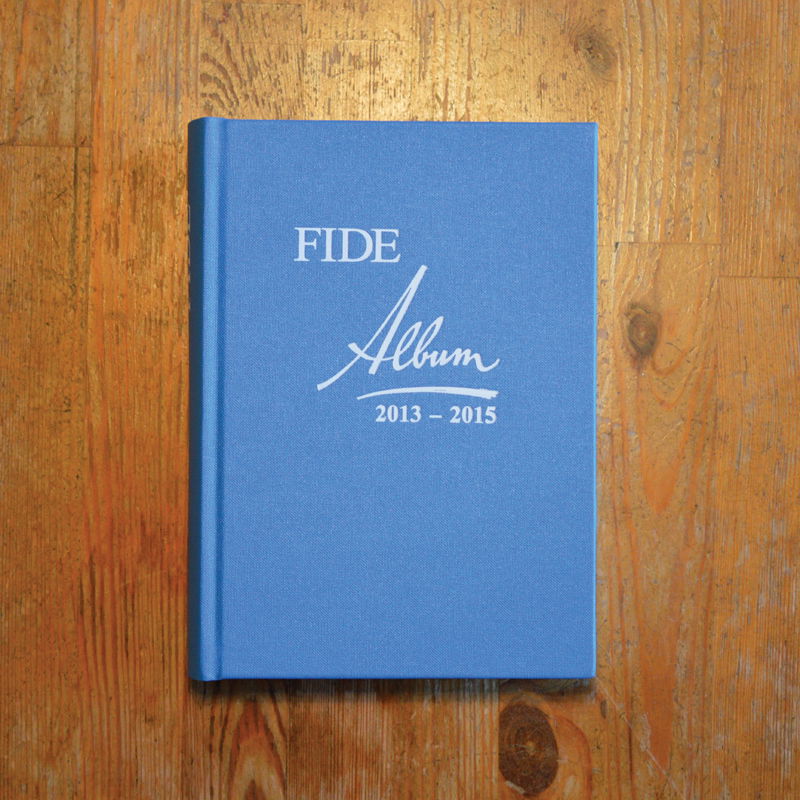
CJ: For myself, I thrive on approbation and so, just as I’m pleased if a friend says he enjoys a problem I’ve composed, I’m delighted if the judge of a composing tourney thinks highly of it. Fortunately I enjoy the best of both worlds because it is also the case that I don’t lose any sleep if judges regard one of my problems less highly than I do. So for me tourneys are enjoyable in a very mildly competitive sense – I’m not at all concerned whether a problem of mine is above or below that of a ‘rival’ problemist, I just enjoy it if my problems do well. And for me exactly the same applies in relation to whether they receive the accolade of acceptance for a FIDE Album. I do understand the opposite view (that ‘competitive’ and ‘artistic’ cannot go together), but my feeling is that even with the most conscientious work by the best qualified of judges all that the Albums can do is to convey an approximation of what was being achieved meritoriously in the period covered by the Album, and so I don’t regard stats as regards Album entries in the same light as sporting stats (such as the placings in a football league). So for me it is a shame that some brilliant composers withhold their problems from consideration for inclusion in Albums.
SM: Finally, to a general chess enthusiast who might consider taking up chess problems seriously, what would your advice be?
CJ: There is so much chess problem material online now. So although one bit of advice might be to get books that are collections of the problems of top composers over the years, it’s actually possible both to do that and to get a sense of what’s going on in the contemporary composing world online. For instance, the influential and readable helpmate book which I mentioned earlier, Black to Play, is available via the ‘Julia’s Fairies’ website. And, as another example, the website of ‘The Problemist’ (the magazine of the BCPS) now allows all visitors to read all but the most recent of the back issues of the magazine, so you could spend days browsing through articles (or trying to solve original problems published therein, knowing that if you’re stymied you can refer ahead to the later issue in which the solution was published!). With most editors of most chess magazines and websites you can strike up an email correspondence, so it need not be a hindrance if you don’t know of any problem enthusiasts in your locality. And if you are tempted to try your hand at composing most editors will be happy to appraise any contributions you send them. That’s how I started out – sending composing efforts to British Chess Magazine.
Three of my favourite helpmates
By Christopher Jones
This last section of the article is the proverbial cherry on the cake. Here Christopher quotes three of his favourite problems by contemporary composers of helpmates other than him. He not only explains the thematic content and intricacies of these gems in detail but also talks about the impression he had when he first came across them!
Problem 1
Marjan Kovacevic and Fadil Abdurahmanovic, The Problemist 1988, 1st Prize
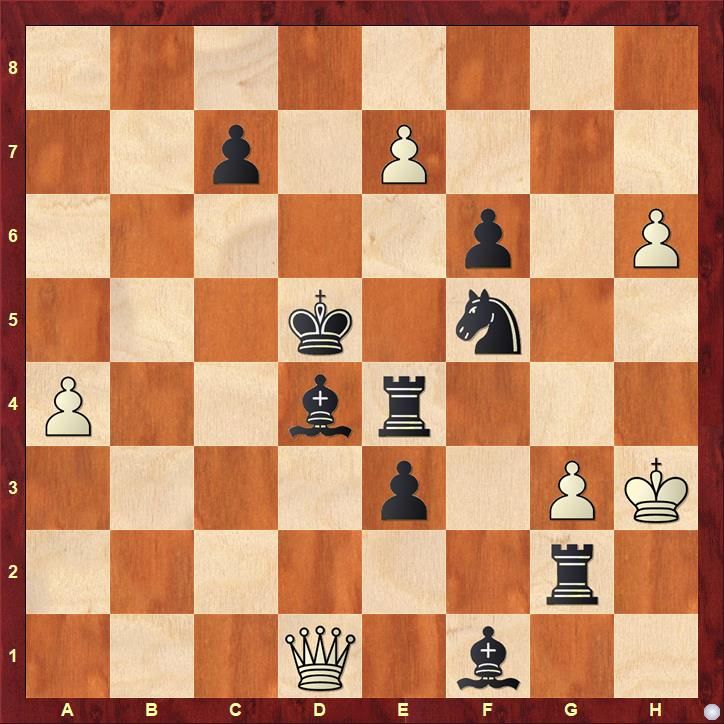
Part (a), which is the diagram itself, has the following four solutions: 1.Kc4 e8Q 2.Bc3 Qb5#; 1.Ke6 e8R 2.Kf7 Qh5#; 1.Ke6 e8B 2.Be5 Qd7#; 1.Re5 e8N 2.Ke4 Nxf6#. Part (b) is obtained by rotating the board 180 degrees and the four solutions then become 1.Ne3 dxe3 2.Kf5 Qg6#; 1.Kf3 d3 2.Bg3 Qe4#; 1.Kf5 d4 2.Bf4 Qg6#; 1.Kd4 dxc3+ 2.Kc5 Qb5#.
A fabulous achievement – all 4 promotions (known by problem buffs by the German term Allumwandlung , or ‘AUW’) in one part and all 4 possible wP moves (Albino) in the other. One year into my membership of the BCPS and a keen solver of all the helpmates published in The Problemist, I was mightily impressed with this!
Problem 2
Vasil Krizhanivski, Probleemblad 2014, 2nd Prize

1.Rxe8 Bxg7 2.Kxe3 Kb6 3.Kd4 Re6#; 1.gxh6 Be4 2.Kxe3 Bf5+ 3.Kxf3 Bh3#; 1.gxf6 Bd7 2.Kxf3 Re6 3.Kg4 Rxf6#; 1.Rxc6 Bf4 2.Kxf3 Be5+ 3.Kxe3 Bc3# - Four very dynamic solutions, with each of the white officers being captured in one solution and delivering mate in another. There are further cyclic effects, notably that the white officers take turns to be the front piece and the rear piece in ‘batteries’ lined up against the bK (e.g., the Rf6 front and Bg7 rear in the first solution).
Problem 3
Viktoras Paliulionis, Maroc Echecs 2019, 1st Prize
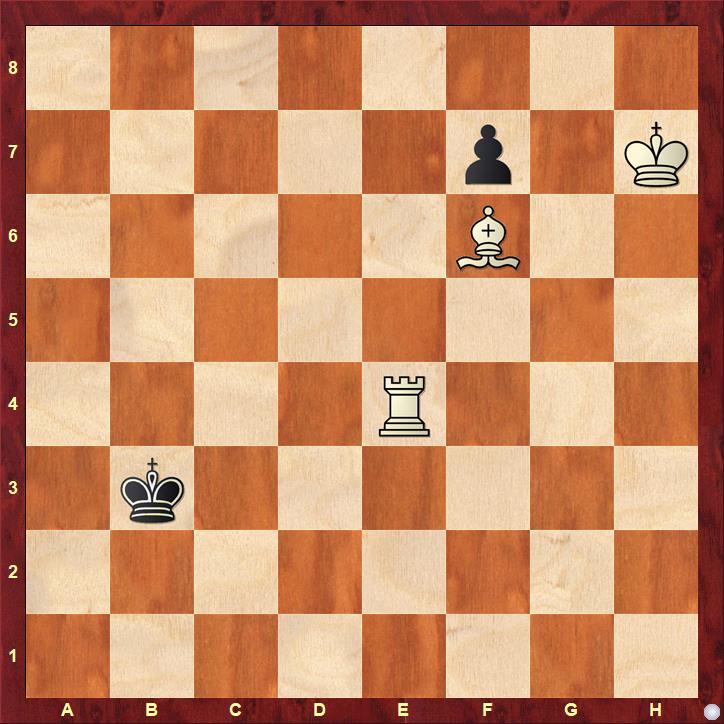
“Set play” means that in addition to the 1.BW 2.BW 3.BW 4.BW 5.BW move sequence comprising the ‘full solution’ there is another, one ‘half-move’ shorter, which would take effect if Black forfeited his first move.
So the set play is 1…Bd4 2.Kc4 Bh8+ 3.Kd5 Kg7 4.f5 Rd4+ 5.Ke5 Kf7#. This can’t be done as part of the full-length solution as any black move from the diagram renders it impossible. So instead we have 1.Kc2 Re8 2.Kd3 Be7 3.Ke4 Bf8+ 4.Kf5 Re5+ 5.Kf6 Bg7#. To achieve two completely different, yet completely harmonious, solutions (noting the complementary white batteries!) with just 5 men on the board seems to me to be almost miraculous.
About author of this article

Satanick Mukhuty is an author and social media manager at ChessBase India. He has a background in Mathematics. He is an avid enthusiast of composition chess and is sincerely committed to promoting it around the world.












































